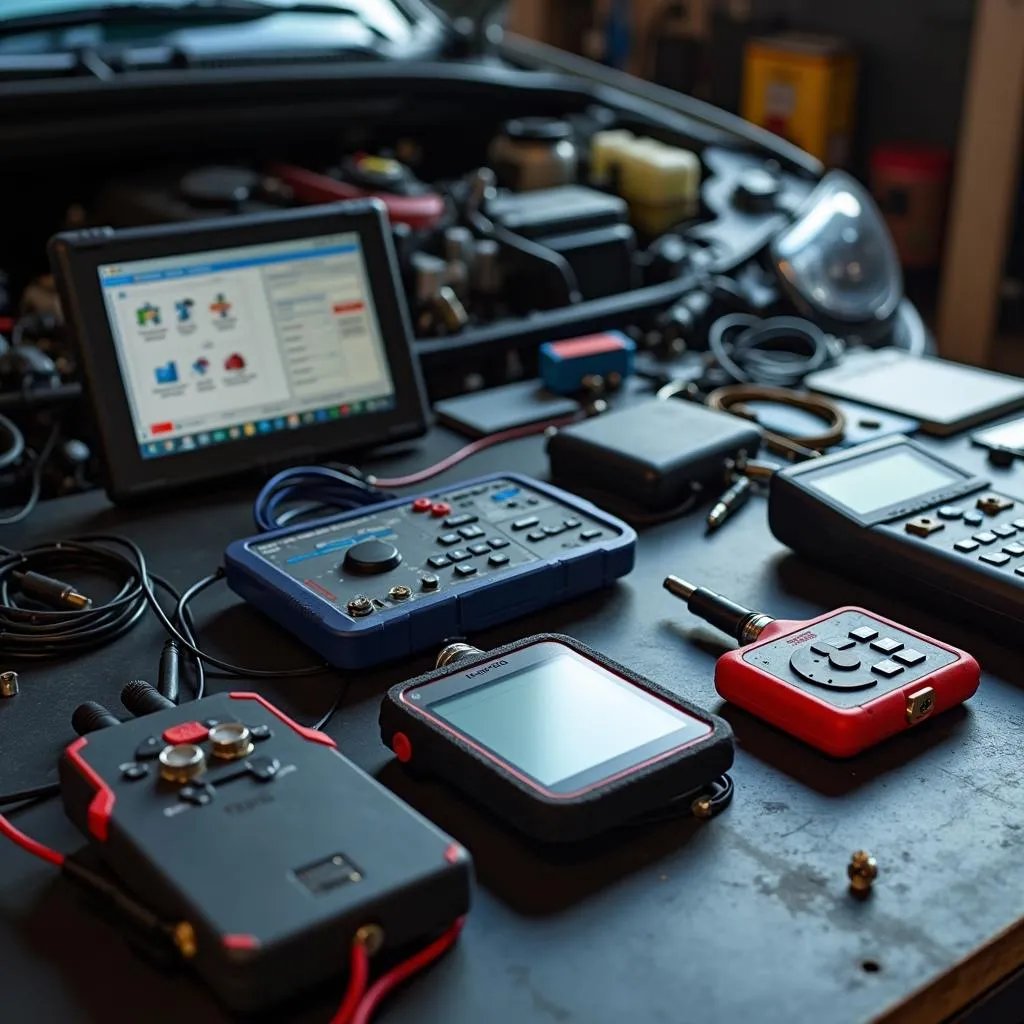The 2005 Chevy Colorado is a reliable workhorse, but like any vehicle, it can experience its fair share of electrical gremlins. One common issue reported by owners is a false emergency brake warning light. This frustrating problem can occur intermittently or remain persistently on, causing unnecessary worry and potential safety concerns. This comprehensive guide will delve into the common causes behind this issue and provide you with effective troubleshooting steps to get to the root of the problem.
Understanding the Emergency Brake Warning System
Before we dive into troubleshooting, it’s essential to understand how the emergency brake warning system works. In your 2005 Chevy Colorado, the system primarily relies on a few key components:
- Emergency Brake Handle Sensor: This sensor detects when the emergency brake handle is engaged or disengaged, sending a signal to the instrument cluster.
- Brake Fluid Level Sensor: Located in the master cylinder reservoir, this sensor monitors the brake fluid level and triggers the warning light if it falls below a safe level.
- Wiring and Connectors: A network of wires and connectors transmits signals between the sensors, the instrument cluster, and other related components.
When any of these components malfunction or encounter an issue, it can lead to a false emergency brake warning.
Common Causes and Troubleshooting Steps
Here are some of the most common culprits behind a false emergency brake warning in your 2005 Chevy Colorado and how to address them:
1. Low Brake Fluid Level
This is often the most straightforward cause. When the brake fluid level drops below a certain point, it triggers the warning light.
Troubleshooting:
- Check the brake fluid level in the master cylinder reservoir. It’s located under the hood, on the driver’s side.
- If the fluid level is low, add the correct type of DOT 3 or DOT 4 brake fluid (as specified in your owner’s manual) until it reaches the “MAX” line.
- Inspect for any visible leaks around the master cylinder, brake lines, and calipers. If you notice any leaks, it’s crucial to have them addressed by a qualified mechanic immediately.
2. Faulty Emergency Brake Handle Sensor
The emergency brake handle sensor is a common culprit for false warnings. Over time, it can wear out, get misaligned, or accumulate dirt and debris, leading to inaccurate readings.
Troubleshooting:
- Locate the emergency brake handle sensor under the center console, near the handle itself.
- Inspect the sensor for any visible damage, loose connections, or obstructions.
- Gently clean the sensor and its surrounding area with electrical contact cleaner.
- If the sensor appears damaged or cleaning doesn’t resolve the issue, it will likely need replacement.
3. Sticking Emergency Brake Cable
Sometimes, the emergency brake cable can become stuck, especially in colder climates or if the vehicle hasn’t been driven in a while. This can prevent the emergency brake from fully disengaging, even if the handle is down.
Troubleshooting:
- Try engaging and disengaging the emergency brake handle multiple times to see if it frees up the cable.
- Inspect the emergency brake cables under the vehicle for any signs of rust, kinks, or damage.
- If the cable appears compromised, it’s best to have it inspected and potentially replaced by a professional.
4. Worn Brake Pads or Rotors
While not a direct cause of a false emergency brake warning, worn brake pads or rotors can sometimes trigger the warning light. This is because the brake system needs to work harder, potentially affecting the brake fluid level sensor.
Troubleshooting:
- Inspect your brake pads and rotors for signs of wear, such as deep grooves or a thin pad surface.
- If the pads or rotors are nearing the end of their lifespan, it’s best to have them replaced.
5. Electrical Issues
Electrical gremlins can also be the source of a false emergency brake warning. This could include:
- Faulty wiring or connectors: Corrosion, damage, or loose connections can disrupt the signals between components.
- Malfunctioning instrument cluster: In rare cases, a problem with the instrument cluster itself might be the culprit.
Troubleshooting:
Electrical issues can be complex to diagnose and repair. If you suspect an electrical problem, it’s highly recommended to consult with a qualified mechanic who has the expertise and diagnostic tools to pinpoint and address the issue effectively.
Expert Insights
“Many car owners overlook the importance of regular brake system maintenance,” says John Smith, a seasoned automotive electrician with over 20 years of experience. “Simple tasks like checking your brake fluid level regularly and having your brake system inspected annually can prevent a lot of headaches down the road, including false warning lights.”
He further adds, “When troubleshooting an emergency brake warning, it’s crucial to approach the problem systematically. Start with the simplest and most common causes before delving into more complex electrical issues.”
Conclusion
Experiencing a false emergency brake warning in your 2005 Chevy Colorado can be unsettling. However, by understanding the common causes and following the troubleshooting steps outlined above, you can often identify and address the problem effectively.
Remember, if you’re unsure about any of these procedures or if the issue persists despite your efforts, it’s always best to consult with a qualified mechanic to avoid further complications.


